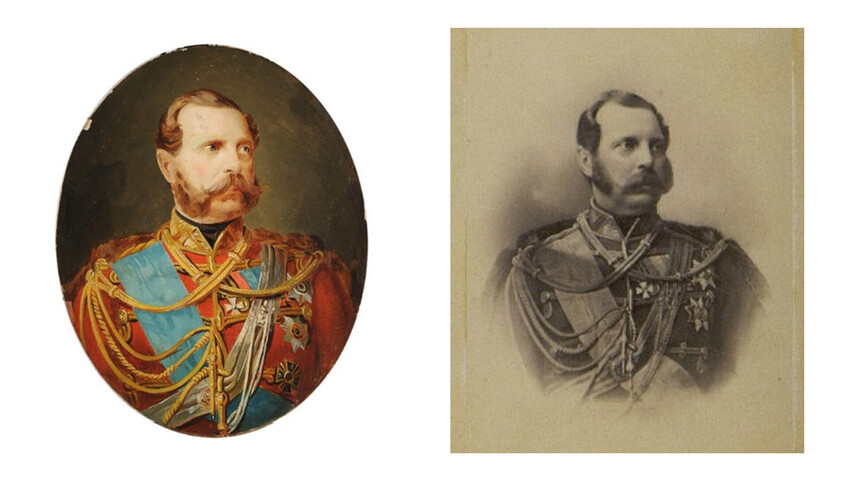
In the early 19th century, in order to speed up copying and replication of paintings, engravings and lithographs were used, which were joined to a rigid base and painted with watercolors or oil paint. For example, the technology of applying an image to a primed canvas using lithography was used by the then fashionable artist George Dawe, the author of portraits for the Military Gallery of the Winter Palace. His workshop operated in St. Petersburg in the 1820s.
Later, photographs also came into play. Employees of the Russian Museum, while examining the portrait of Alexander II,discovered that it was, in fact, a colored photograph. Its print can only be seen at 25-fold magnification. They also found traces of silver on the picture, which was used in photography back then.
Perhaps the prototype was a photograph of the emperor taken by Andrei Denier in the 1860s. In 1865, the photographer of Their Imperial Majesties produced a series of “Albums of photographic portraits of famous persons in Russia” and invented a method of obtaining soft contours in photographs.
Dear readers,
Our website and social media accounts are under threat of being restricted or banned, due to the current circumstances. So, to keep up with our latest content, simply do the following:
If using any of Russia Beyond's content, partly or in full, always provide an active hyperlink to the original material.
Subscribe
to our newsletter!
Get the week's best stories straight to your inbox